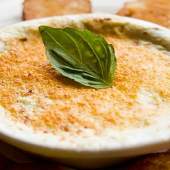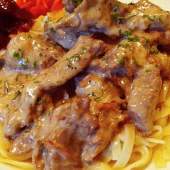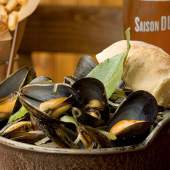Cereal

“The Breakfast of Champions.” “Snap, Crackle, Pop!” “I’m Cuckoo for Cocoa Puffs.” “Trix are for Kids!” “Magically Delicious!” “They’re GREAAAAT!”
Unless you were raised by wolves, you are surely aware of the products that these slogans are advertising: breakfast cereal (or late-night snack, if you prefer). This week, as Americans mark National Cereal Day, designated to honor Dr. John Kellogg and his groundbreaking invention — corn flakes — let’s investigate the who, what, why, where, and when of some of your favorites.
Up until about the beginning of the 20th century, most Americans were accustomed to a diet that incorporated copious amounts of meat, at every meal including breakfast (Charles Dickens once said that no breakfast was complete without a T-bone steak). This led to some unpleasant gastrointestinal maladies and other serious physical and, some believed, mental health problems. (There is an unsubstantiated rumor that Lizzie Borden’s decision to take an axe to both of her parents may have been influenced in part by the steaming mutton she was served for breakfast on that sweltering August day, pre-air conditioning.)
Although the vast majority of Americans were carnivores, there were plenty of vegetarians around — most due to religious or ethical concerns, but also some who were ahead of their time in believing that there was a correlation between dietary fiber and good health. One of them was James Caleb Jackson, who ran a sanitarium and thought his patients might benefit from a grain-based breakfast — in 1863, he introduced “granula,” made from a graham flour dough that was broken into hard pieces, dried, and soaked overnight in milk. Later, the aforementioned Dr. John Kellogg perfected this recipe, now called “granola,” for patients at his Michigan health spa, and a patient of his, C.W. Post, did him one better and developed this into the still-popular Grape-Nuts.
Kellogg, not to be outdone, teamed up with his younger brother Will and created corn flakes, later getting the bright idea to add sugar to the mix (although Frosted Flakes — and its mascot Tony the Tiger — didn’t debut until the 1950s). Post fired back with his own corn flake copycat, with the unlikely name of Elijah’s Manna; after religious groups balked, he changed the name to the far catchier Post Toasties.
Sometime around the sinking of the Titanic, the Quaker Oats Company, looking to branch out from its oatmeal business, devised a method of making rice grains “puff up” under pressure; out of this discovery came Puffed Wheat and Puffed Rice. These were advertised as “food shot from guns.” (As opposed to “food shot by guns?”)
Oatmeal
As with so many other things, Wheaties came about entirely by accident when a wheat bran mixture was accidently spilled on a hot stove and roasted. Its slogan “The Breakfast of Champions” first appeared on a billboard in connection with a 1930s-era Minnesota minor league baseball team. Rice Krispies came along soon after, with its iconic characters Snap, Crackle, and Pop.
And Chex? These came from the Ralston-Purina Company, developed for a radical (and unfortunately, racist) cult who believed in, among other things, mind control (this was called Ralstonism, and its cereal was Shredded Ralston). The Chex name came later, and famously, an image of Elizabeth Taylor graced its box in the 1950s. And that beloved-of-moms-and-toddlers cereal, Cheerios? These were originally called CheeriOats — that name did not last long. Cheerios (or more to the point, the wildly popular Honey Nut Cheerios) have long been (and are still) the best-selling cereals in the U.S.
The space age inspired the Quaker Oats Company to introduce Quisp (its spokesperson was a pink-and-green alien, and the cereal was saucer-shaped). Its earthbound cousin, Cap’n Crunch, employed the same sugar-corn-oat formula. On the heels of these came many, many artificially colored and flavored “fruit” cereals such as Franken Berry and Fruity Pebbles…plus “chocolately” varieties such as Count Chocola. Perhaps in reaction to all of these chemicals and sugars, the cereal pendulum began to swing back as granola enjoyed a resurgence, and the cereal wars began anew as manufacturers competed to find ways to develop and market healthier, higher fiber, and more natural options.
The cereal pioneers would be proud, as that was their aim in the first place! Have a bowl in their honor.





